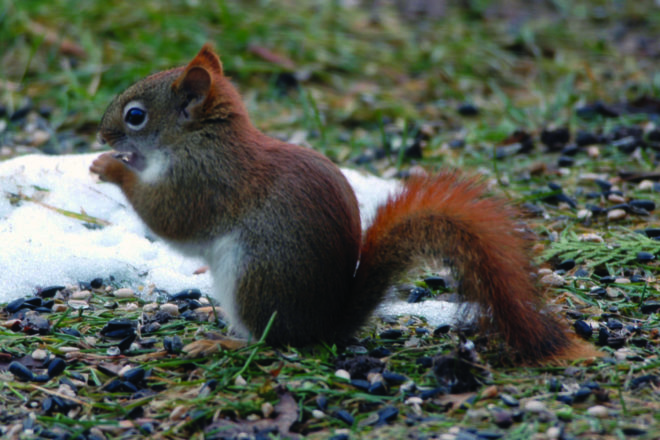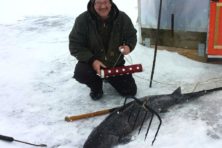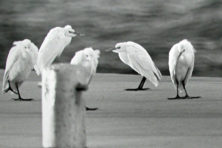DOOR TO NATURE: Unusual Animal Activity
- Share
- Tweet
- Pin
- Share

The deep snow that covered the county a month ago is mostly gone as I write this. More gray squirrels are visiting the yard now than during the two weeks of winter that occurred in mid-January.
Two red squirrels are also here, and on Feb. 10, I saw a chipmunk searching for food under the feeders.
Historically, our chipmunks don’t leave their winter quarters until mid to late March, but this unusually mild winter brought one out about five weeks early. It makes me wonder how many other creatures are affected by these higher-than-normal temperatures.
I noticed digging in the lawn recently, which made me think a skunk was in search of June bug larvae, inch-long white “worms” that serve as easy-to-get early food for skunks. Skunks don’t usually search for them until late March or early April.
Four subspecies of chipmunks live in Wisconsin. The largest one is the gray eastern chipmunk, which lives in the northern two-thirds of the state and measures about 10 inches long including the tail. The Ohio chipmunk, which occupies the southern third of Wisconsin, is slightly smaller with a duller brown color.
The peninsula chipmunk is also slightly smaller than the eastern gray. It is quite restricted to Door County, northeastern Brown County, Kewaunee County and perhaps part of Manitowoc County.
The fourth subspecies is the least chipmunk. It is about 8 inches long and has more distinctive facial markings than the others. I suspect, but cannot prove, that hybrids between the subspecies can occur.
Chipmunks are not true hibernators. They typically gather nuts, fruits and seeds in fall and store them in their underground tunnels for the winter. Our records have shown them to enter their winter quarters by mid-November and reappear in our front yard by mid-March, but climate change is altering these dates.
True hibernators include cold-blooded creatures like snakes, frogs and turtles, as well as a few mammals like the woodchuck and the 13-lined ground squirrel, also called the spermophile. Some bats are included in the hibernator group; other bats migrate.
Gray squirrels and the smaller red squirrels are active all year. In early spring about 20 years ago, we had up to 16 gray squirrels in the yard at one time. It is thought that they normally do not travel more than 1,000 feet from their nest and that the average population is one pair per acre.
Early March is when females come into estrus, or “heat.” Several males will run after a single female in a competitive chase to mate with her. I’m beginning to see that happening in my front yard now. Other males from neighboring woods may eventually be drawn to this spring ritual.
The females will carry their young for 40 to 45 days, giving birth sometime in late March to early April. You can expect to see baby squirrels out and about by late April into early May.
Older females entering at least their second full year will most often have a second litter later in summer. A 12-year-old female may already have raised 20 litters of young. Most often, there are three squirrels to a litter, but occasionally, there are as many as five.
Last year’s extremely high crop of acorns and other tree seeds will certainly help the squirrel population. Recently, I watched a gray squirrel high in a basswood tree, picking a few seeds still clinging to the branches.
Red squirrels are more common in the upland hardwoods than they are here. Their preferred habitat is the conifer forests closer to the shorelines of Lake Michigan and Green Bay. We saw them regularly when we lived at the Ridges Rangelight.
Red squirrels are known to have an average lifespan of six to seven years. Compared to gray squirrels, they are more agile, impulsive, impudent, noisy and downright sassy at times. They can sputter in rage, stamp their feet, jerk their tails and let loose with scolding outbursts of chatter that defy analysis.
The American red squirrel’s species is Tamiasciurus hudsonicus, its subspecies loquax. Its genus name comes from the Greek tamia, meaning distributor (it buries seeds) and the Latin sciurus for squirrel. Loquax is from the Latin loquac, meaning talkative. The name fits the red squirrel perfectly.
Both gray and red squirrels bury nuts and seeds for later use, and in doing so, plant a lot of trees.
Nature, with its checks and balances, its predators and prey, and its food demands and supplies, is wonderful and exciting to observe. Humans should learn from the examples animals (including squirrels) set.
Lesson number one: “Simplify and live in harmony with nature.”



